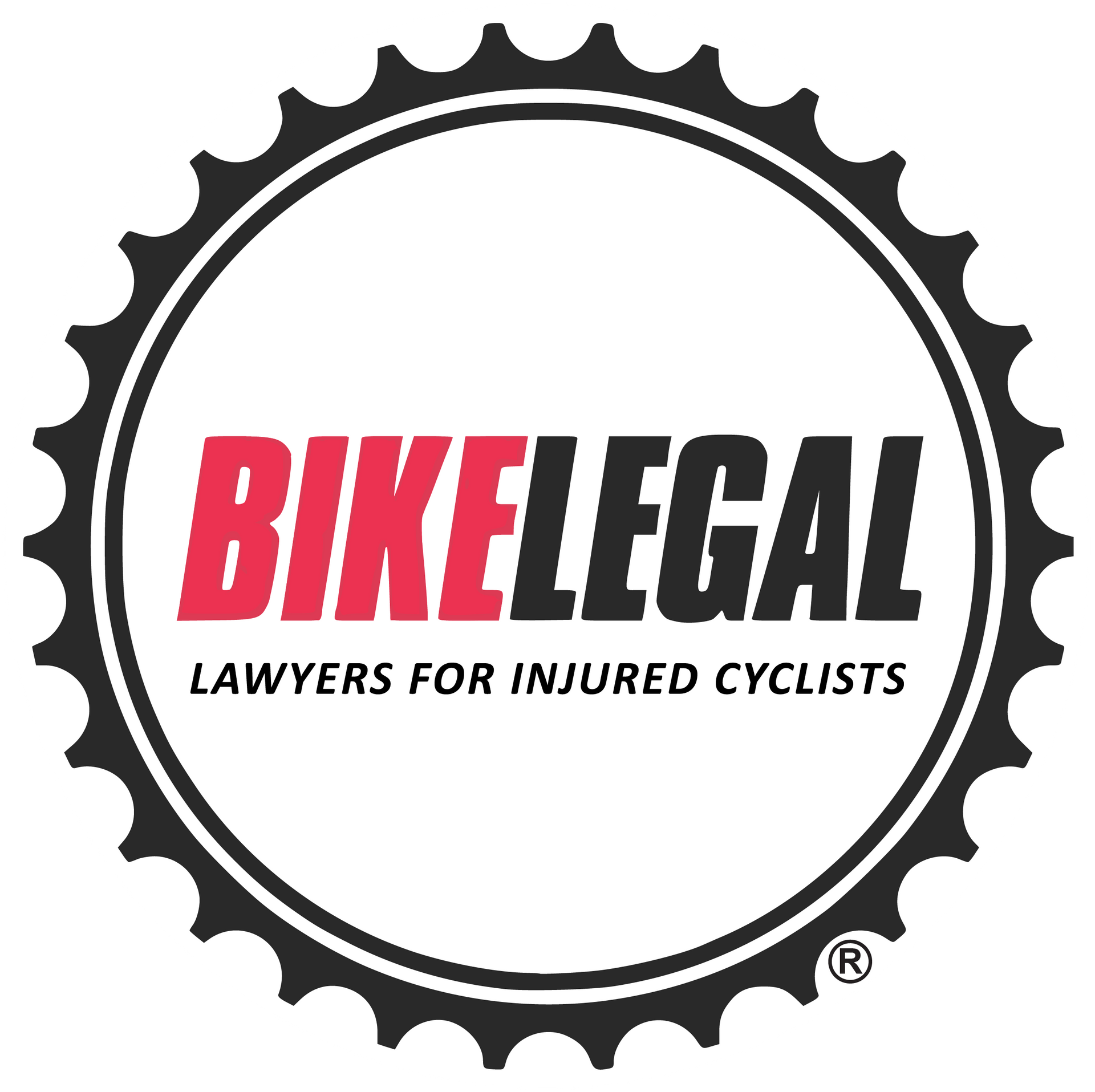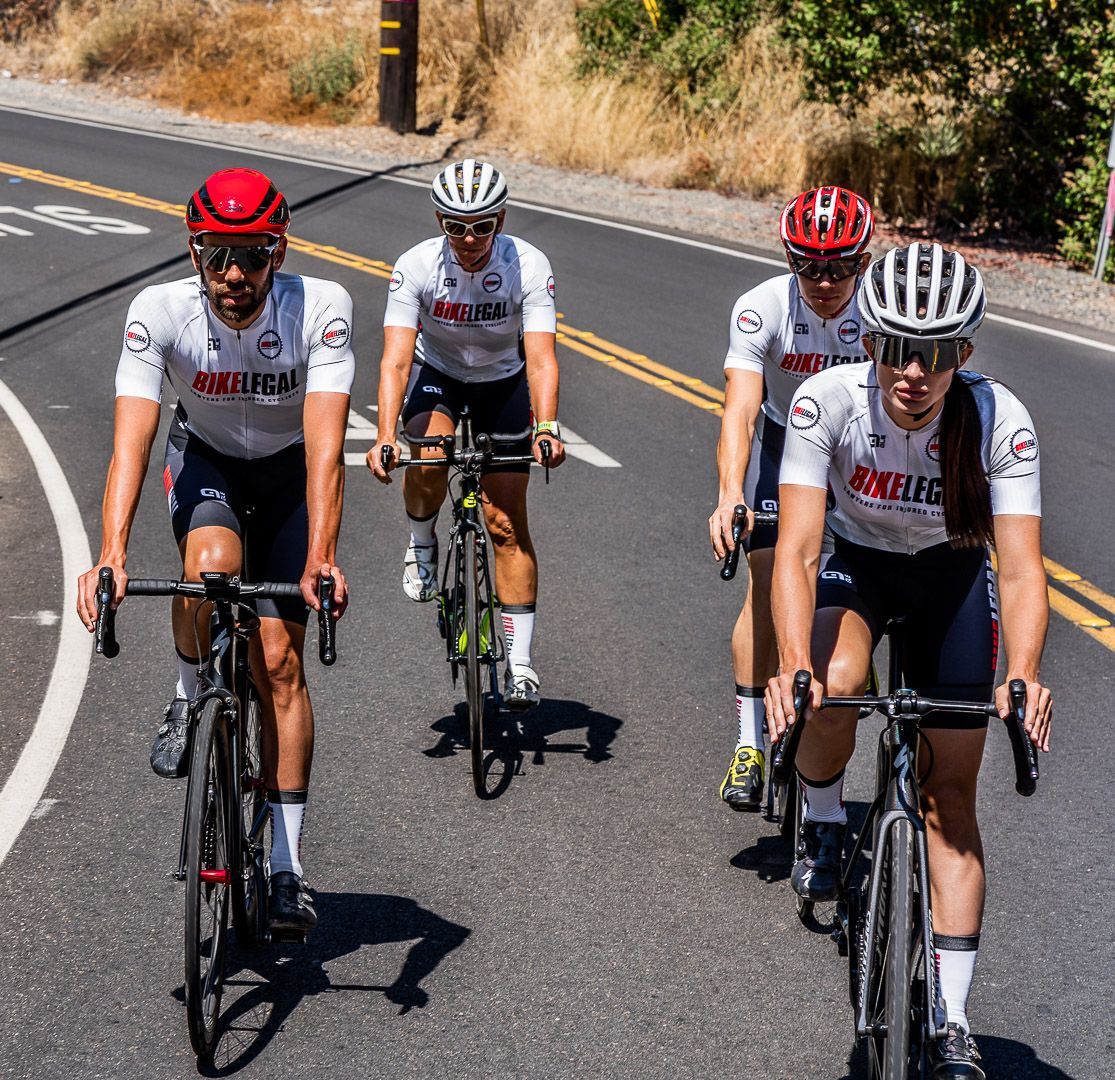Common Indoor Cycling Injuries: Causes, Prevention, and Solutions
Follow us on
social media!
Indoor cycling has become a popular workout choice due to its accessibility, low-impact nature, and engaging apps that make each ride more interactive and enjoyable. However, like any form of exercise, improper technique or overuse can lead to injuries. Whether you're a seasoned cyclist or just getting started, understanding common indoor cycling injuries is key to staying healthy.
Indoor cycling pain isn’t something you have to endure. Identifying the root cause—whether it’s poor bike setup, muscle imbalances, or overuse—is the first step toward relief. With the right adjustments and preventive measures, you can minimize discomfort and ride pain-free.
For a complete breakdown of the various types of indoor cycling and setups, check out our Guide to Indoor Cycling.
This guide covers:
- The most common indoor cycling injuries
- Their causes and risk factors
- Effective prevention strategies for a more comfortable ride
Causes of Indoor Cycling Injuries
The primary factors contributing to indoor cycling-related injuries are:
| Cause of injury | What it is |
|---|---|
| Muscle imbalance | Constant pedaling tightens quadriceps and hip flexors while weakening hamstrings and glutes, leading to knee strain. Over time, this imbalance can result in patellar tendinitis (knee pain), iliotibial (IT) band syndrome, and lower back strain. |
| Static positioning | Unlike outdoor cycling, which naturally incorporates shifts in posture (e.g., standing, leaning, or navigating terrain), indoor cycling often involves prolonged static postures. As a result, you may experience numbness, tingling, or discomfort in the lower back, knees, and hips and hands. |
| Improper bike setup | A poorly adjusted bike forces the body into unnatural alignment, amplifying strain on joints and muscles. Key setup errors include:
|
| Overtraining without rest | The convenience and low-impact nature of indoor cycling can lead to overtraining. Without proper recovery between sessions, muscles, tendons, and ligaments don’t have time to repair, increasing the risk of stress fractures, tendinopathy, and chronic fatigue. |
Common Indoor Cycling Injuries
Following are the most common cycling injuries you may face while riding indoors:
1. Knee pain

Indoor cycling knee pain is one of the most common complaints among cyclists. This type of knee injury can manifest in various ways, from dull aches to sharp, stabbing pains.
Common types include:
- Patellofemoral Pain Syndrome (PFPS): Often referred to as "runner's knee," this pain is felt around or behind the kneecap.
- Iliotibial Band Syndrome (ITBS): This pain appears when the iliotibial band rubs against the femur. You can feel this on the outer side of your knee.
- Tendinitis: Overuse of the knee joint can lead to inflammation in the tendons around the cyclist's knee, causing persistent pain and stiffness.
Causes
- Incorrect saddle height or position
- Muscle imbalances
- Overtraining
Prevention and solutions
- Adjust saddle height properly: Ensure the saddle allows for a 30-degree knee bend at the pedal's lowest point. This prevents overextension or excessive bending, reducing strain on the knees.
- Stretch key muscle groups: Stretch the IT band, hip flexors, and quads to relieve tightness and improve knee function. Effective exercises include the IT band stretch, crossover stretch, and pigeon pose.
- Modify intensity if pain persists: If knee pain continues despite adjustments, reduce ride intensity or duration to prevent further strain and allow for recovery.
2. Back pain

Back pain from indoor cycling can occur in several key areas, including lower back, upper back, and even shoulder. The severity of these pains can range from mild aches to sharp, persistent discomfort, depending on the underlying cause.
Causes
- Poor posture
- Low handlebars
- Excessive leaning forward
Prevention and solutions
- Adjust handlebar height: Raise handlebars to a comfortable level to maintain a relaxed, upright posture, reducing strain on back muscles.
- Maintain proper torso position: Keep the torso at a 30-degree angle, with a straight back and relaxed shoulders. Avoid slouching and engage the core muscles throughout the ride.
- Strengthen core and back: Incorporate bird-dogs, thoracic extensions, and planks to build core stability, supporting the torso and reducing injury risk while cycling.
3. Wrist and hand pain
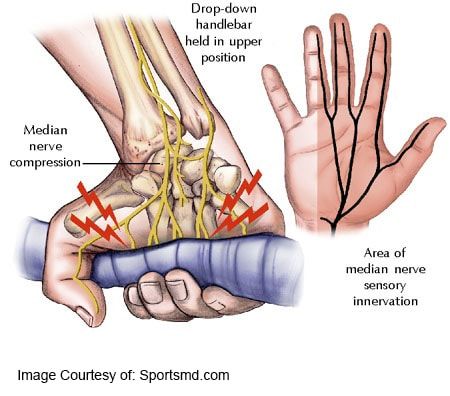
Hand and wrist pain, also known as handlebar palsy, from indoor cycling occur due to the reduced blood flow. Common issues include:
- Carpal Tunnel Syndrome (A pinched nerve in the wrist)
- Inflammation of the tendons in the wrist or hand
- Numbness or tingling
Causes
- Over-gripping the handlebars
- Poor hand positioning
Prevention and solutions
- Maintain wrist alignment: Keep wrists straight and aligned with the forearms to avoid excessive bending, which can cause strain and discomfort.
- Vary hand positioning: Change grip placement on the handlebars throughout the ride to prevent pressure buildup in one area of the hands or wrists.
- Use padded cycling gloves: Invest in gloves with extra cushioning to reduce impact and improve comfort, minimizing hand and wrist strain.
4. Neck pain
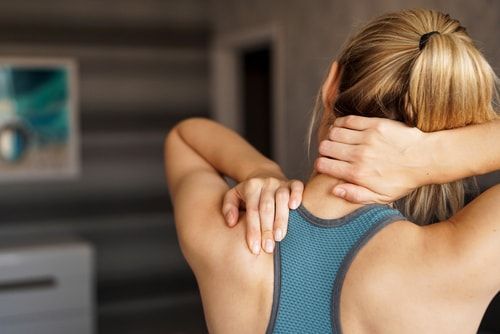
Neck pain from indoor cycling often radiates to the middle back and can cause stiffness, discomfort, and difficulty rotating or bending the head. Cyclists may also experience tension in the shoulders and upper back, especially after long rides or prolonged screen focus.
Causes
- Static posture that limits neck and upper back flexibility
- Poor handlebar positioning, forcing the head into an unnatural angle
- Extended screen focus, causing strain on the cervical spine
Prevention and solutions
- Adjust handlebar position: Keep handlebars at a level that supports a neutral neck position, preventing excessive head tilting and reducing strain.
- Incorporate neck stretches: Perform chin tucks and side bends to improve neck mobility and relieve tension.
- Strengthen upper back muscles: Practice shoulder blade retractions to enhance postural support and reduce neck and shoulder strain.
5. Saddle sores
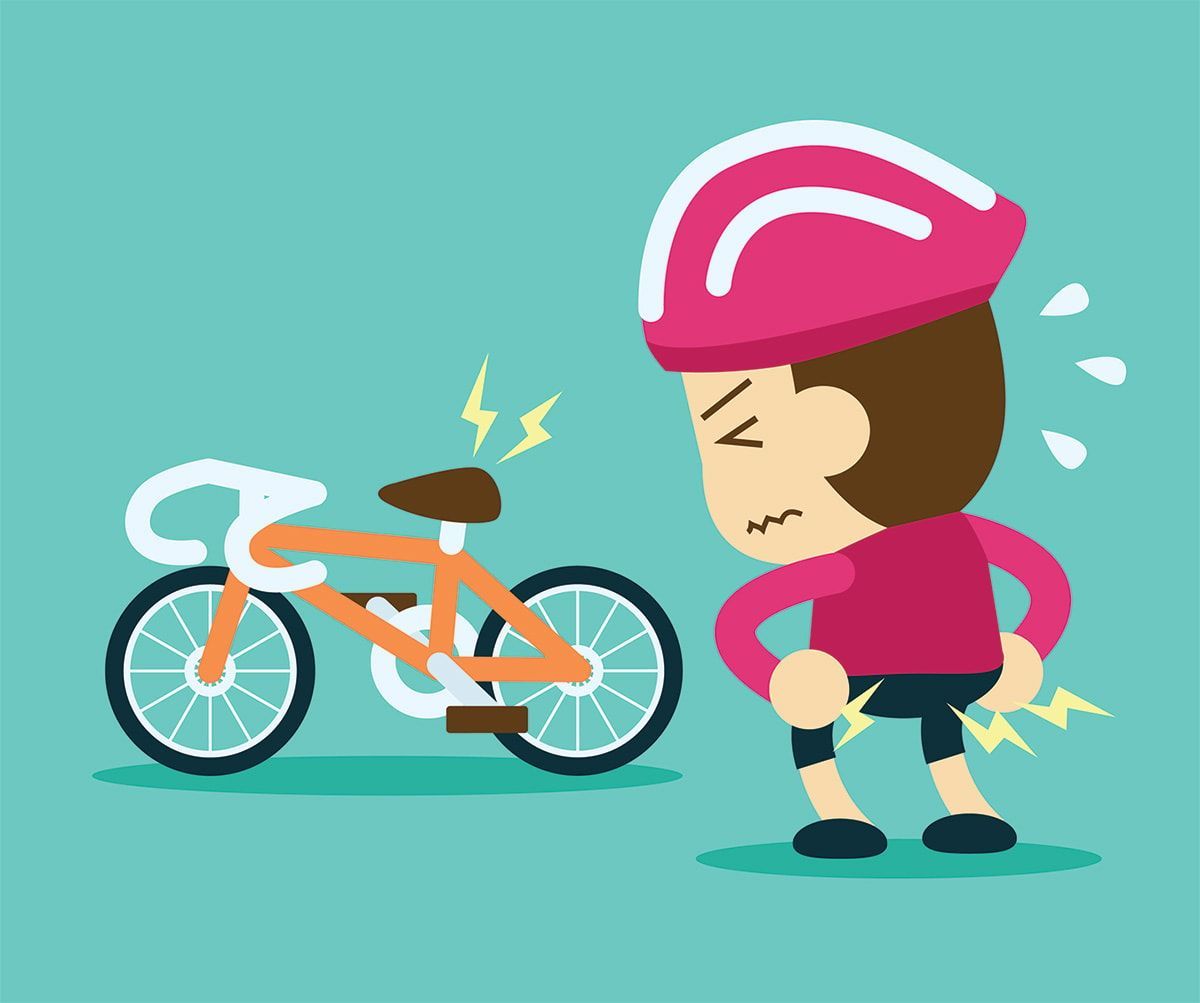
Saddle sores are painful skin lesions that result from friction between the body and the saddle. They typically cause skin irritation, redness, or boils in areas that come into direct contact with the saddle. Prolonged friction and pressure can lead to pain, swelling, and even open sores, making cycling uncomfortable.
Causes
- Sweat and moisture
- Improper saddle fit
- Poorly fitting or low-quality cycling shorts
Prevention and solutions
- Adjust bike seat properly: Set the height, tilt, and fore-aft position to match your body, preventing excess pressure and friction.
- Wear proper cycling shorts: Choose well-fitting, moisture-wicking shorts with adequate padding to reduce chafing and irritation.
- Use anti-chafing products: Apply chamois cream or anti-chafing products to minimize friction and keep skin dry with moisture-wicking materials.
6. Foot pain
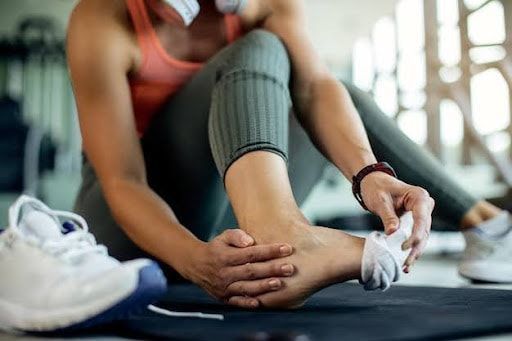
During indoor cycling, riders typically experience three main types of foot discomfort: Metatarsalgia (pain in the ball of the foot), Hot-Foot Syndrome (a burning sensation across the forefoot), and arch pain. These conditions can develop gradually over time or appear suddenly during particularly intense sessions.
Causes
- Tight or ill-fitting shoes
- Poor cleat placement
- Excessive pedal pressure
Prevention and solutions
- Wear properly fitted cycling shoes: Ensure shoes are snug but not tight, allowing slight toe movement to prevent discomfort.
- Align cleats correctly: Position cleats to match the natural alignment of your feet, ensuring even pressure distribution and reducing the risk of metatarsal pain.
- Stretch feet and calves: Before and after cycling, perform foot and calf stretches, like toe pointing, flexing, or rolling a ball under the foot, to improve flexibility and reduce tension.
- Use cycling-specific insoles: If foot pain persists, consider insoles with arch support or cushioning to enhance comfort and stability.
7. Hip pain
When cycling indoors, riders typically experience three main categories of hip pain:
- Bursitis: An inflammation of the fluid-filled sacs that cushion the hip joint, often felt as a sharp pain on the outside of the hip
- Hip flexor strain: A tight, pulling sensation at the front of the hip that worsens with pedaling
- Impingement: A pinching feeling in the hip joint, particularly noticeable during the pedal stroke
Causes
- Tight hip flexors from prolonged sitting or cycling
- Weak glute muscles
- Improper saddle height or position
- Overuse or repetitive motion
Prevention and solutions
- Adjust saddle height correctly: Set the saddle at the right height to prevent overextension or excessive hip bending, reducing tension in the hip joints and surrounding muscles.
- Stretch hip flexors and glutes: Incorporate hip flexor and glute stretches into your workout routine to increase flexibility and alleviate tightness.
Indoor Cycling Injury Prevention Tips
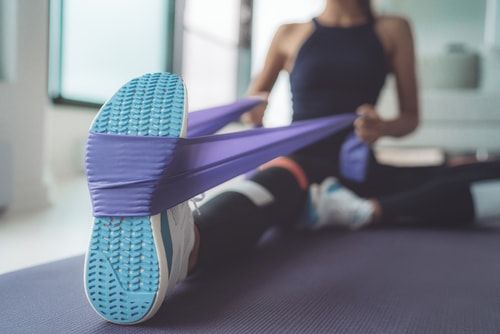
Preventing common cycling injuries is crucial for enjoying indoor cycling safely and maintaining long-term performance. Key strategies to ensure your well-being while riding indoors:
- Strengthening and flexibility exercises: Core stability and flexibility form the foundation of injury-free cycling. Focus on exercises that target cycling-specific muscle groups and movement patterns. Examples include:
- Quadruped thoracic extension: Enhance mid-back flexibility with this exercise, which is crucial for maintaining proper posture and reducing upper back strain during rides.
- Bird-dog exercise: Improve core stability and balance. A strong core helps in maintaining an efficient riding posture, minimizing the risk of injuries.
- Ensure proper bike setup: An optimal bike fit is key to preventing discomfort and overuse injuries. Key adjustments include setting an appropriate saddle height to prevent knee strain, positioning handlebars to distribute weight evenly, and aligning cleats to ensure natural leg movement.
- Maintain correct form and posture: Avoid placing excessive weight on your handlebars, which can lead to wrist and shoulder injuries. Instead, engage your core muscles to create a stable platform for power transfer. This engagement helps prevent both upper body fatigue and lower back strain during longer rides.
- Consider warm-up and cool-down: Before riding, perform dynamic stretches targeting major muscle groups used in cycling – particularly your quadriceps, hamstrings, and hip flexors. After your ride, incorporate static stretches to maintain flexibility and reduce muscle tension. This routine helps prevent both immediate and long-term injuries.
- Invest in essential indoor cycling equipment: Quality cycling gear significantly impacts injury prevention. Invest in:
- Well-padded cycling shorts to protect against saddle discomfort
- Cycling gloves to reduce hand pressure and vibration
- Properly fitted shoes that optimize power transfer while maintaining comfort
- Listen to your body: Pay attention to any unusual sensations, particularly in your knees, lower back, or neck. When you notice persistent discomfort, take time to assess your position and make necessary adjustments rather than pushing through pain.
When to Seek Help for Indoor Cycling Injuries?
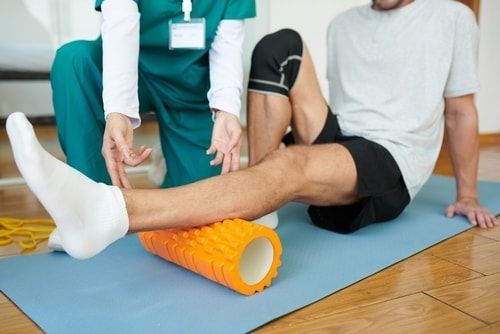
While you can manage most indoor cycling injuries with proper care and rest, some may require professional intervention. Recognizing when an injury needs professional attention can prevent further complications.
Seek help if you experience:
- Severe pain: If you experience intense pain that doesn't subside after a short period of rest or worsens with continued activity, it's time to consult a healthcare provider.
- Swelling or bruising: Significant swelling, bruising, or noticeable changes in the affected area could signal a more serious injury, such as a muscle tear or joint issue.
- Difficulty breathing or chest pain: Any difficulty breathing, chest tightness, or pain during or after cycling should be addressed immediately by a doctor. These could be symptoms of a more serious underlying condition.
- Inability to bear weight: If you're unable to put weight on your leg or foot, or experience persistent difficulty with movement, you may have a sprain or fracture that requires medical attention.
For proper diagnosis and treatment, consider consulting a physical therapist for rehabilitation exercises, a bike fit specialist to adjust your setup, or a doctor for medical evaluation and imaging if needed.
Summing Up
While indoor cycling offers an excellent low-impact workout, awareness, and prevention of potential injuries are crucial for long-term success and enjoyment. By following our guide, you can significantly reduce the risk of injury.
Key Takeaways
- Ensure your bike is adjusted to your body’s measurements to avoid strain and discomfort.
- Maintain a neutral spine and avoid hunching to reduce the risk of back and neck injuries.
- Increase intensity and duration slowly to allow your body to adapt and prevent overuse injuries.
- Invest in proper cycling shoes and padded shorts to enhance comfort and support.
- Pay attention to any discomfort or pain and rest when needed to prevent long-term injuries.
Ride Protected, Ride Safe, with Bike Legal
At Bike Legal, we understand the challenges cyclists face because we’re cyclists, too. If you’ve been injured in a cycling accident or need advice on protecting your rights, we’re here to help. With unmatched expertise in bicycle accident law and a commitment to safety and education, we fight for justice and fair compensation for injured cyclists.
Contact Bike Legal today for a free consultation and let us help you get back to riding with confidence.
CALL 877-BIKELEGAL (877-245-3534)
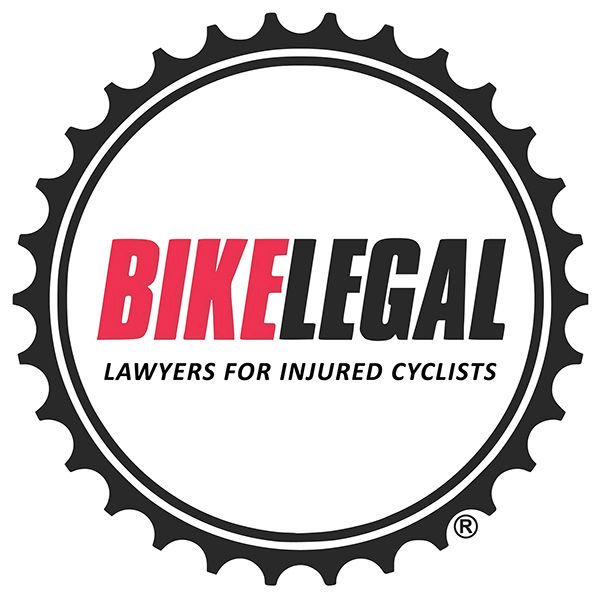
FAQs
Q: Can you get injured on a stationary bike?
A: Yes, injuries on a stationary bike can occur due to improper setup, overuse, or poor form. Common injuries include:
- Knee pain – Often caused by incorrect saddle height or overuse.
- Back and neck strain – Results from poor posture or low handlebar positioning.
- Wrist and hand discomfort – Caused by excessive pressure on the handlebars or improper grip.
- Hip pain – Can develop from tight hip flexors or incorrect saddle positioning.
- Foot numbness or pain – Often linked to poor cleat alignment or overly tight shoes.
To prevent injuries, ensure proper bike fit, maintain good posture, vary your hand position, and incorporate rest and stretching into your routine.
Q: Why does my knee hurt after indoor cycling?
A: Experiencing knee pain after an indoor cycling session? You're not alone. Knee discomfort is one of the most common issues cyclists face, often due to improper bike setup, overuse, or poor posture. Common causes include:
- Incorrect saddle height – A seat too high overextends the knee, while a seat too low puts excessive pressure on the patella.
- Handlebar position – Low or far-forward handlebars can strain the knees by affecting overall posture.
- Pedal and cleat misalignment – Poor foot positioning can cause knee stress and misalignment.
- Muscle imbalances – Weak or tight quads, hamstrings, and hip flexors increase strain on the knee joint.
- Overtraining – Excessive riding without recovery can lead to inflammation, tendinitis, or joint stress.
Q: How can I prevent saddle sores during indoor cycling?
A: Saddle sores are a common issue for indoor cyclists, but they can be prevented with the right gear, bike setup, and hygiene practices. Follow these key strategies to stay comfortable and pain-free:
1. Optimize Your Bike Setup
- Adjust your saddle height and position – A poorly positioned saddle increases friction and pressure points.
- Choose the right saddle – A well-cushioned, properly shaped saddle reduces irritation and discomfort.
2. Wear Proper Cycling Gear
- Invest in moisture-wicking padded shorts – High-quality cycling shorts with a built-in chamois reduce friction.
- Use chamois cream – Apply a chafing-reducing cream to minimize skin irritation and discomfort.
3. Maintain Good Hygiene
- Change out of sweaty gear immediately – Bacteria buildup from sweat increases the risk of saddle sores.
- Wash your cycling shorts after every ride – This helps prevent infections and irritation.
4. Adjust Your Riding Habits
- Avoid sitting in the same position for too long – Shift your weight occasionally to relieve pressure.
- Gradually increase ride intensity – Sudden increases in duration or resistance can lead to increased friction and discomfort.
By following these steps, you can significantly reduce the risk of saddle sores and enjoy a more comfortable indoor cycling experience. If irritation persists, consider adjusting your bike fit or consulting a specialist to ensure optimal positioning.
Q: What is the most common injury related to indoor cycling class?
A: The most common injury in indoor cycling classes is knee pain, often caused by improper bike setup, overuse, or muscle imbalances. Other frequent injuries include:
- Lower back pain – Results from poor posture or excessive forward leaning.
- Wrist and hand pain – Caused by gripping the handlebars too tightly or poor wrist alignment.
- Neck and shoulder strain – Due to prolonged static posture or low handlebars.
- Saddle sores – Develop from friction, poor bike fit, or inadequate cycling shorts.
To prevent injuries, ensure your bike is properly adjusted, maintain correct form, and incorporate strength training and stretching into your routine.
